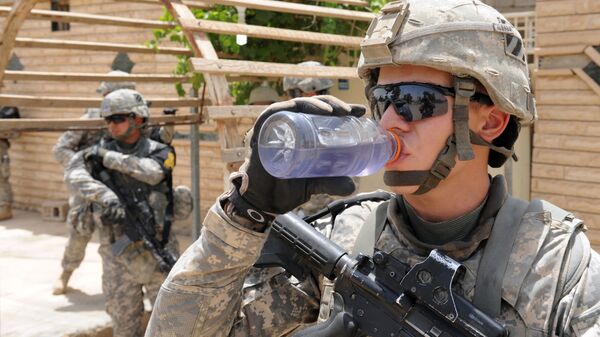Iraq’s parliament was convened for an extraordinary session on Sunday, voting to terminate the operation of the US-led coalition against Daesh (ISIS),* and passing a resolution demanding the withdrawal of all foreign military personnel stationed in the country, including an estimated 5,000 US troops. Here’s what the move means in practice:
- US troops were originally withdrawn from Iraq in late 2011, in accordance with the 2008 status of forces agreement and ‘Strategic Framework Pact’, signed over eight years after the 2003 US invasion of the country. Prior to the withdrawal, US troop numbers reached 170,000 in 2007. A large contingent of US Marines and some 4,000-5,000 private security contractors stayed behind at the massive US Embassy in Baghdad, as well as the consulates in the cities of Basra, Mosul and Kirkuk.
- US troops began returning to Iraq starting in 2014, after Daesh began capturing wide swathes of northern and western Iraq. Initially, Washington limited its involvement to aerial operations (intelligence gathering, bombing), and the deployment of small numbers of troops and advisors to assist Iraqi security forces. The Obama administration beefed up troop numbers to hundreds, and then several thousand, as the conflict continued, with over 5,500 personnel deployed by mid-2016. US troops engaged in multiple operations, although most of the fighting on the ground was left to the Iraq’s security forces, including the Baghdad-allied Shia militias which received support from Iran.

A US Air Force F-15E Strike Eagle aircraft flies over northern Iraq Sept. 23, 2014
© US Air Force / Senior Airman Matthew Bruch
- Daesh lost all of its Iraqi territories by the end of 2017, and in early 2018, the US announced plans to reduce troop levels. However, roughly 5,000 US troops have remained in the country ever since, with their formal mission being the training of Iraqi security forces.
- Baghdad began negotiating a new agreement of US forces in Iraq in May 2017. At that time, Prime Minister Haider al-Abadi insisted that no US “combat troops” would be allowed to stay in the country after Daesh was fully routed.
- Iraqi Shia lawmakers, constituting a majority of Iraqis, and enjoying a strong presence in Iraq’s legislature, began calling for the accelerated withdrawal of US forces from the country in early 2018, with the Badr Organization, part of the powerful Fatah Alliance, calling for the US to withdraw as soon as possible because they acted as “a magnet for terrorists.”
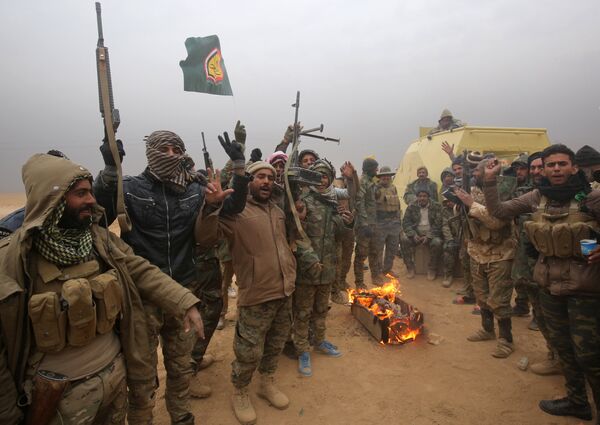
Iraqi Shiite fighters from the Hashed al-Shaabi (Popular Mobilisation) paramilitaries gesture to the camera as they warm up around a fire near the village of Tal Faris, south of Tal Afar, on November 30, 2016, during a broad offencive by Iraq forces to retake the city Mosul from jihadists of the Islamic State group
© AFP 2023 / AHMAD AL-RUBAYE
- Calls for withdrawal began intensifying in early 2019, as the Shia militias which played a role in liberating Iraq from Daesh started warning that if the US tried to impose its presence by force, Iraq too could drive US forces out “by force.”
- Following Israeli strikes on Iraq in the summer, the Fatah Coalition announced that it considered the US responsible for Tel Aviv’s actions, and reiterated its calls for US troops to withdraw. In October, Iraqi officials voiced annoyance over the US’s decision to move troops from Syria to Iraq, saying it did not give its permission for this.
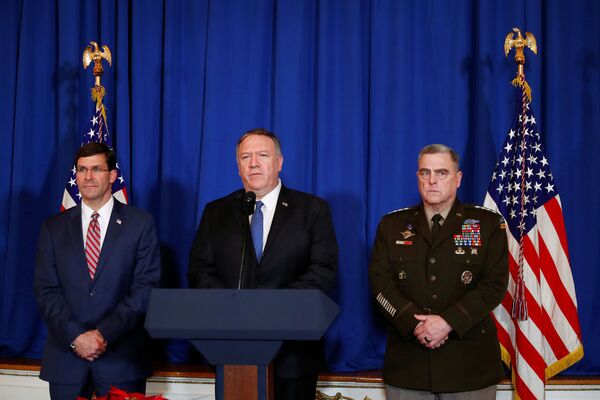
U.S. Secretary of State Mike Pompeo speaks about airstrikes by the U.S. military in Iraq and Syria, at the Mar-a-Lago resort in Palm Beach, Florida, U.S., December 29, 2019
© REUTERS / Tom Brenner
- Baghdad’s patience with Washington began to run out in late December, when, in response to an alleged Shia militia attack on a US military base in Kirkuk, the US launched airstrikes on five facilities belonging to Kata’ib Hezbollah, a Baghdad-allied Shia militia group, across western Iraq and Syria. President Barham Salih blasted the US strikes as “unacceptable,” while a spokesman for Acting Prime Minister Adel Abdul-Mahdi described the US action as a “violation of Iraqi sovereignty and a dangerous escalation that threatens the security of Iraq and the region.”
- The US drone strike assassination of Qasem Soleimani, the Iranian Quds Force commander who provided vital assistance to Iraq’s Shia militias in the campaign against Daesh, proved the final straw, with Prime Minister Mahdi convening an extraordinary session of parliament on the matter and urging lawmakers to vote in favour of terminating the presence of foreign troops in the country.
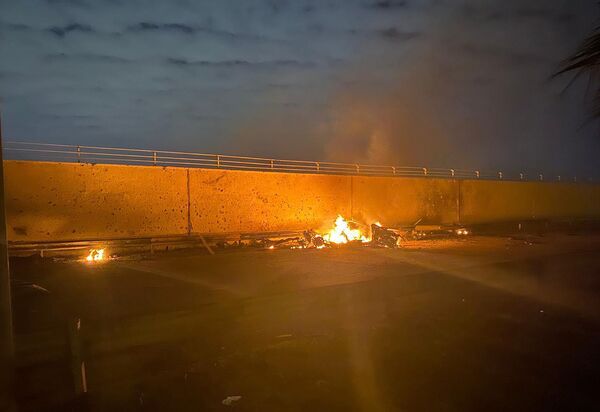
A picture shows a destroyed vehicle on fire following a US strike on January 3, 2020 on Baghdad international airport road in which top Iranian commander Qasem Soleimani was killed along with eight others, including the deputy head of Iraq's powerful Hashed al-Shaabi paramilitary force.
© AFP 2023 / HO / Iraqi military
- Finally, on Sunday, after parliament passed the resolution to kick US troops out of the country, Moqtada al-Sadr, a powerful Shia cleric whose parliamentary alliance holds 54 of the 329 seats in Iraq’s legislature, called on militants inside and outside Iraq to create “International Resistance Legions” to end America’s military presence in the country, by force if necessary.
- Pending the Iraqi government’s approval of the parliament’s resolution, the ball will fall in Washington’s court. If the US refuses to abide by Baghdad’s wishes, its remaining troops in Iraq could become hostage to the powerful, battle-hardened Shia militias which proved instrumental in Daesh’s defeat, and which are enraged over President Trump’s decision to assassinate Soleimani.
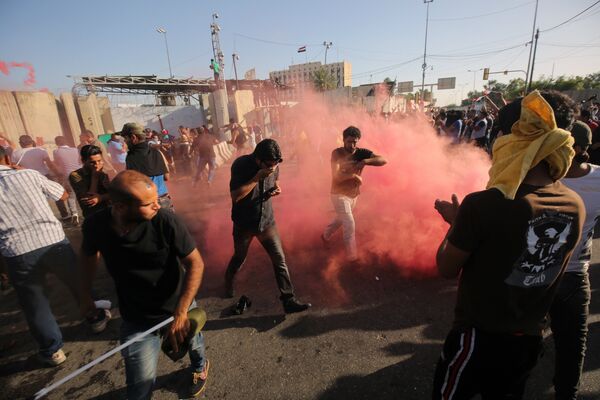
Supporters of Iraqi cleric Moqtada al-Sadr flee the smoke grenades fired by security forces during clashes after demonstrators broke into Baghdad's fortified "Green Zone" on May 20, 2016
© AFP 2023 / AHMAD AL-RUBAYE
* A terrorist group outlawed in many countries.

